Flowering and Fruiting Behavior, Seed Germination, and Survival Status of Heritiera fomes Buch-Ham and Excoecaria agallocha L. Species in the Sundarban Mangrove Forest of Bangladesh ()

1. Introduction
Phenology is the calendar of different actions in the life history of a plant [1]. Flowering and fruiting behaviors, as well as seed development are fundamental parts of this process by which seeds are produced by a plant physiological process that maintains a complicated series of flowering, fruiting, and, finally, seed development and maturity. On the other hand, seed germination and seedling establishment are fundamental sequential stages of natural regeneration and development of individual species. Natural regeneration is a process by which woodlands are restocked by trees that develop from seeds that fall and germinate in situ, it is defined as “the renewal of forest stands by natural means” [2]. So, the vegetation of mangrove forests is restocked by natural regeneration. Generally, in tidal forests, natural regeneration is adequate, as in other natural forests, but the timing of mangrove reproduction depends on local environmental conditions and may differ broadly over the variety of a species [3]. The flowering, fruiting behavior, seed germination to seedling development stage of the young seedlings is strongly dependent on the surrounding growing environment of the forest [4] [5].
The Sundarban is the single largest tract of mangrove forest in the world. It lies across the outer deltas of the Ganges, Brahamaputra, and Meghna rivers and covers an area of 10,000 km2 in the south-western part of Bangladesh and West Bengal of India. It is important from both ecological and economic perspectives. The land area of the Sundarban is molded by tidal action, resulting in a distinctive physical factor. The forest that stands over the Ganges basin is playing an incomparable role in balancing the coastal wetland ecosystems in the Bengal basin [6]. The Sundarban is crisscrossed by a network of complex estuarine systems created by the rivers. Thus, the Sundarban is a region of transition between the freshwater of the rivers originating from the Ganges and the saline water of the Bay of Bangle [7]. So, differential saline concentration prevails between the western and eastern zones of the Sundarban as the sweet water influx in the west is much less and thus becomes more saline than in the east [8]. Water salinity increases from the upstream to the downstream zone in order to retain a good ecological balance and also shows the variation in both water and soil salinity with tidal conditions [9]. However, along with tidal inundation, the level of salinity greatly influences the phenological feature, natural regeneration or development and composition of mangrove species as well as the quality of natural vegetation of the mangrove forest [10]. Therefore, based on the level of soil salinity Sundarban has been divided into three distinct ecological zones [11] viz. 1) Oligohaline zone, which is located in the eastern and northeastern part of the forests. The area receives fresh water supply from the Ganges. during the Rainy season, the salinity is very low and the soil gets a good coating of fresh silt each year and soil salinity ranges on 4 - 8 dS−1∙m; 2) Mesohaline zone which occupies the middle portion of the forest and salinity of soil ranges between 8 - 15 dS/m; 3) Polyhaline zone which occupies the south and western part of the forest and covers a sizeable portion of forest lands. Salinity is higher in the dry season and water salinity is almost that of normal seawater salinity and soil salinity have been found 15 dS/m or above. Mangroves are not salt lovers, rather salt tolerates. Although they inhabit saline sediments. High salinity makes the soil physiologically dry and thereby changes flowering fruiting time than retards seed germination, which impedes growth and development of mangroves. In the Sundarban mangrove forest, period of flowering, fruiting behavior, natural growth and development as well as survivability of the seedlings are the main stages of a regeneration or successful natural growth. However, excessive salinity concentrations on the survival, growth, and distribution of mangrove species in the early stages may retard the absorption of many essential plant nutrients as well as hamper metabolic processes. Thus, saline concentration has shown an extensive relationship with the growth and development of the mangrove species in the Sundarban forest. Therefore, efforts should be made to assess early growth performance as well as phenological behaviors such as flowering and fruiting behavior, seed germination, and survival rates for major mangrove species. So, to achieve such outcomes, the present work on major mangroves viz., Heritiera fomes Buch-Ham and Excoecaria agallocha L., has been undertaken.
2. Materials and Methods
2.1. Materials
Two mangrove tree species of the Sundarban forest viz. Heritiera fomes Buch-Ham and Excoecaria agallocha L. were selected for the present investigation. Three different areas viz. Chandpai, Jungra and Munshiganj as Oligohaline (4 - 8 dS−1∙m), Mesohaline (8 - 15 dS−1∙m) and Polyhaline saline (>15 dS−1∙m) zones respectively were selected as an experiment site. The Chandpai and Jungra zone are in Chandpai range and Munshiganj zone in Satkhira range of the Sundarban forest.
2.2. Methods
2.2.1. Sample Plot Preparation and Sample Collection
Total nine sample plots (9 × 10 m2) were laid out three plots in each of the Oligohaline, Mesohaline and Polyhaline zone. Each plot has adequate matured trees of Heritiera fomes and Excoecaria agallocha with capable of flowering and fruiting. Flowering and fruiting periods of Heritiera fomes and Excoecaria agallocha have been investigated at the three selected saline zones viz. Chandpai, Jungra and Munshiganj areas from December to late August.
Both Heritiera fomes and Excoecaria agallocha are shown non-viviparous type of germination. So, matured fruits/seeds of them dropped from the mother trees. Naturally dropped seeds at the selected three saline zones of the Sundarban forest were primed for field germination and natural seedling growth. On the other hand, at the same time fruits/seeds were also collected for the determination of morphological characterization. The seeds of Heritiera fomes were collected at the month of June from Chandpai (Oligohaline) and Jungra (Mesohaline) but seeds were collected from Munshiganj (Polihaline) at late July. On the other hand, Excoecaria agallocha seeds were collected at the month of early August from the above mentioned three saline zones.
2.2.2. Preparation of Seed Germination
The present investigation mature seeds of Heritiera fomes and Excoecaria agallocha were allowed to germinate at the forest floor. The field germination was carried out at the three saline zones like Chandpai, Jungra and Munshiganj of the Sundarban mangrove forest. At each sample plot three sub plots (3 × 1 m2) were made for germination of the seeds of H. fomes, E. agallocha species. The seeds were spread over these sub plots and kept them in the natural condition. After 7 days, germination was initiated. Then germinated seeds were count up to 28 days with the interval of 7 days. Length of plumul and height of radical of germinated seeds were also measured.
3. Results and Discussion
3.1. Flowering and Fruiting Behavior of Heritiera fomes Buch-Ham and Excoecaria agallocha L at the Three Saline Zones of the Sundarban Mangrove Forest
Flowering and fruiting behavior of Heritiera fomes and Excoecaria agallocha were investigated at the three saline zones viz. Oligohaline, Mesohaline and Polyhaline. Initiation of flowering activities of Heritiera fomes took place during the period of December-January and completed the fruiting stage by March-April. Fruit shedding took place during the period of late May to June at Chandpai and Jungra (Oligohaline and Mesohaline zones) but at the Munshiganj (Polihaline zone) in late July to early August. However, flowering and fruiting behavior of E. agallocha performed similar performance at the three different saline zones. They initiated flowering in April-May but fruiting stage covered the months of June-July. Fruit ripen and shedding took place between late July and August (Table 1 & Photos 1-7). Previous observation was found that behavior of fruits/seeds development and servility critically depended on moisture availability [1]. Although flowering started most of the mangrove species during the dry season but fruits mature or ripening occurred just before or during the early monsoon or in monsoon (rainy season) [12].
3.2. Seed Germination and Growth of Plumul and Radicle of Heritiera fomes Buch-Ham and Excoecaria agallocha L in the Three Saline Zones of the Sundarban Forest
At the three saline zones viz. Oligohaline (Chandpai), Mesohaline (Jungra) and Polihaline (Munshiganj) zones of the Sundarban forest seed germination status of H. fomes and E. agallocha were observed. Seed germination of Heritiera fomes
![]()
Table 1. Flowering and fruiting behavior of Heritiera fomes (Sundari) and Excoecaria agallocha (Gewa) of the Sundarban forest.
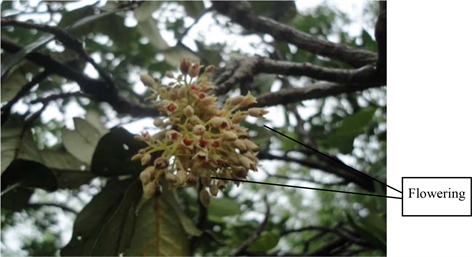
Photo 1. Flowering Branch of Heritiera fomes species.
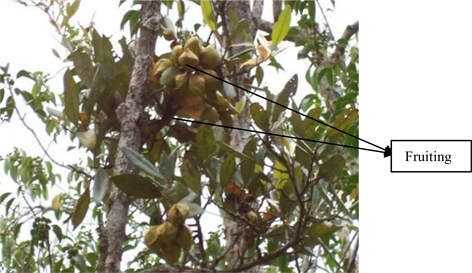
Photo 2. Green Fruiting Branch of Heritiera fomes species.
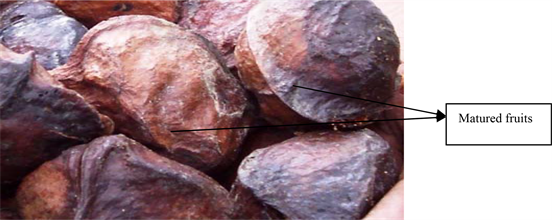
Photo 3. Matured Fruit/Seeds of Heritiera fomes species.

Photo 4. Branch of Flowering of Excoecaria agallocha L. species.
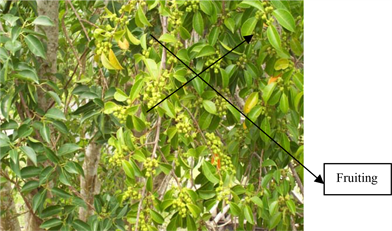
Photo 5. Green Fruiting branch of Excoecaria agallocha L. species.

Photo 6. Green Fruits with seed of Excoecaria agallocha L. species.
Buch-Ham is hypogeal type has a single seeded capsule with fibrous epicarp and brown papery mesocarp, after contact with tidal water they break up and initiate germination. Seeds remain attached with the adult seedlings. Seed germination of Excoecaria agallocha L seeds were epigeal type and initiated by explosively released seeds from the capsule, then in both species germination started from 7 days of sowing at all three saline zones and continued up to 28 days after sowing.
The final germination rate was counted at 28 days after sowing for the both species. At 28 days after showing, Heritiera fomes showed the highest percentage of germination (96%) at the Oligohaline (Chandpai) and Mesohaline (Jungra) zones, but the lowest at the Polihaline (Munshiganj) zone (88%). On the other hand, Excoecaria agallocha showed almost similar germination rate at the three saline zones (Table 2) from the beginning (7 days after sowing) of the germination up to 28 days after sowing (89% - 90%). The earlier findings noticed 65 2% -
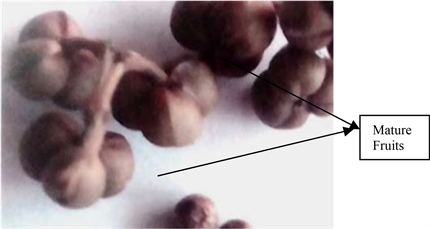
Photo 7. Mature Fruits with seed of Excoecaria agallocha L. species.
![]()
Table 2. Rate of seed germination and growth of root and shoot in length of Excoecaria agallocha L. at three saline zones of the Sundarban forest.
94% germination on majority mangrove species [13]. The growth of radical height and plumule length of H. fomes showed the highest and almost similar at the Chandpai (Oligohaline) and Jungra (mesohaline) zones but lower at the Polihaline (Munshiganj) zone at the 28th day of germination (Table 3 & Photo 8). However, in E. agallocha species, radicle height and plumul length showed almost similar growth trends from 7 days to 28 days at Mesohaline (Jungra) and Polihaline (Munshiganj), but comparatively lower growth found at the Oligohaline zone (Chandpai). Although the seed stage is most of the time well protected against various stresses, after germination due to imbibition, it becomes stress-sensitive and strongly depends on the surrounding environment [5]. Germination and growth in high salinity conditions are insufficient for H. fomes, which show a lower tolerance of salinity, but not for E. agallocha, shown here as a salt-tolerating species.
![]()
Table 3. Rate of seed germination and growth of plumul and radicle in length of Heritiera fomes Buch-Ham at three saline zones of the Sundarban forest.

Photo 8. (a) 28 days Heritiera fomes seedlings with plumul and radical; (b) 28 days Excoecaria agallocha seedlings with plumul and radical.
3.3. Survival Behavior of Seedlings at the Forest Floor
In this investigation, an attempt has been made to establish a constant relationship between different salinities and the ages of the mangroves. A sharply decreasing trend in the survival rates of both Heritiera fomes Buch-Ham and Excoecaria agallocha L from the ages of 2 months to 6 months in three distinct saline zones was observed. After that, the declining trend continued and became negligible up to the age of 12 months. Later survival rates were minimized at the age of 30 months (Figure 1(a) and Figure 1(b)). At this ages (30 months) H. fomes showed 25% survival rate at Oligohaline (Chandpai) and Mesohaline (Jungra) zones but 10% at the Polihaline (Munshiganj) zone. On the other hand, survival rate of E. agallocha was 15% at Mesohaline and Polihaline but 13% at Oligohaline. Such declining trend of the natural regeneration of H. fomes and E. agallocha were also observed by many authors [14] [15] [16] and [17]. Generally, during seed germination and early growth of the seedlings, depends on minerals stored in the seeds, and after the depletion of this source, plants become dependent on soil minerals. Mangroves are not salt lovers but salt tolerant [18]. Although they inhabit saline sediments, their growth and structure generally decline due to increasing sediment salinity [19] [20]. Salinity, among other abiotic stresses, reduces plant survival rate through ionic toxicity and osmotic stress, and then through nutritional stress.
![]()
Figure 1. Seedlings Survival rate of Heritiera fomes Buch-Ham (a) and Excoecaria agallocha L (b) at different ages in the Sundarban forest.
4. Conclusion
Salinity is a key factor for the Sundarban mangrove forest. So, the level or concentration of salinity influences the early natural growth and development of mangroves. The present study provides such information on two major mangroves, viz., Heritiera fomes and Excoecaria agallocha, in relation to different levels of salinity in the Sundarban mangrove forest. Now a day salinity is increasing day by day and it is of great concern to know about the distribution patterns of all major mangroves in different mangrove forests. Otherwise, such major mangroves will be lost to the forest floor.